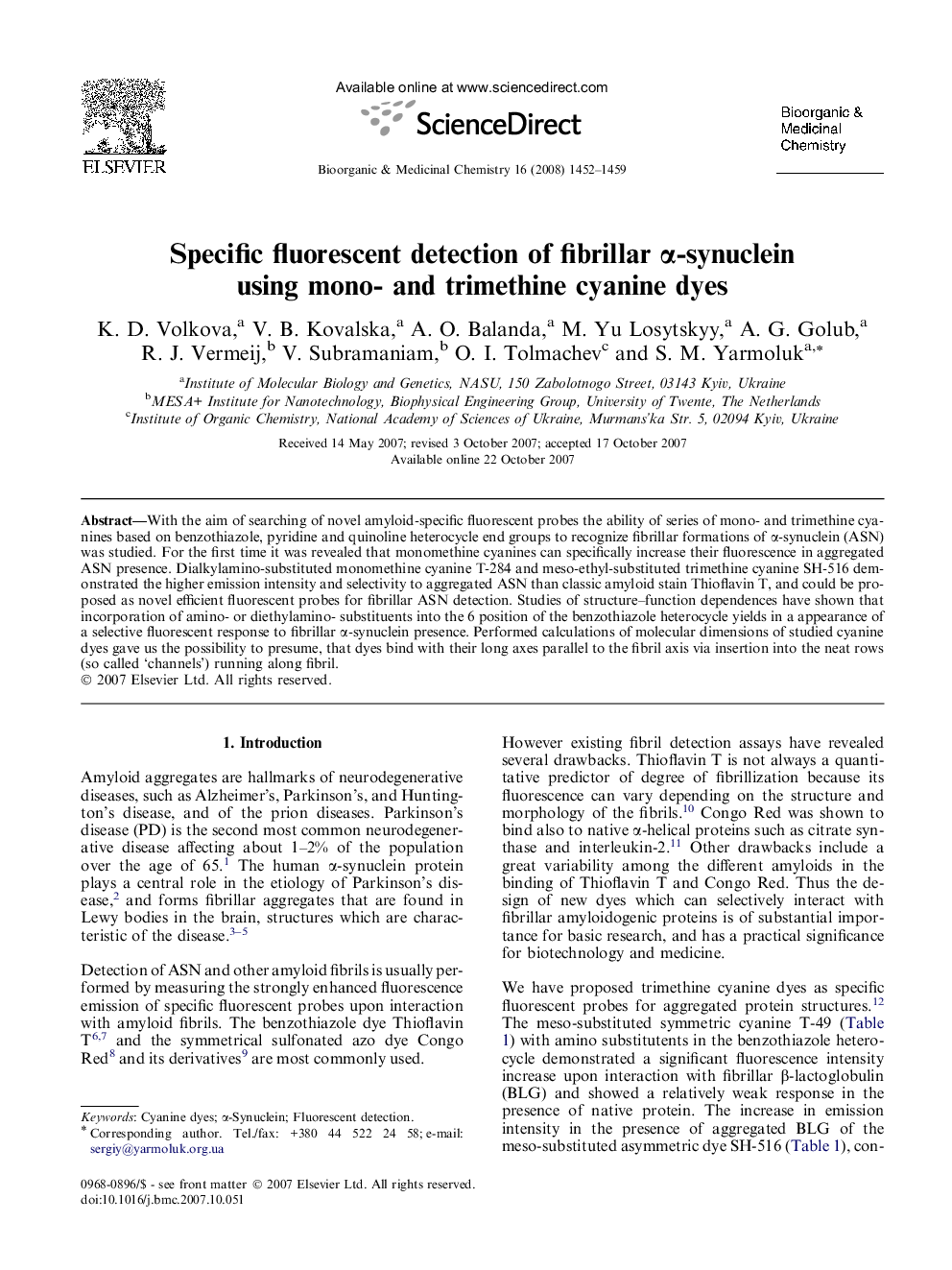| کد مقاله | کد نشریه | سال انتشار | مقاله انگلیسی | نسخه تمام متن |
|---|---|---|---|---|
| 1356858 | 981163 | 2008 | 8 صفحه PDF | دانلود رایگان |

With the aim of searching of novel amyloid-specific fluorescent probes the ability of series of mono- and trimethine cyanines based on benzothiazole, pyridine and quinoline heterocycle end groups to recognize fibrillar formations of α-synuclein (ASN) was studied. For the first time it was revealed that monomethine cyanines can specifically increase their fluorescence in aggregated ASN presence. Dialkylamino-substituted monomethine cyanine T-284 and meso-ethyl-substituted trimethine cyanine SH-516 demonstrated the higher emission intensity and selectivity to aggregated ASN than classic amyloid stain Thioflavin T, and could be proposed as novel efficient fluorescent probes for fibrillar ASN detection. Studies of structure–function dependences have shown that incorporation of amino- or diethylamino- substituents into the 6-position of the benzothiazole heterocycle yields in a appearance of a selective fluorescent response to fibrillar α-synuclein presence. Performed calculations of molecular dimensions of studied cyanine dyes gave us the possibility to presume, that dyes bind with their long axes parallel to the fibril axis via insertion into the neat rows (so called ‘channels’) running along fibril.
Firstly, fluorescent cyanine dyes (monomethine T-284 and trimethine SH-516) are proposed for selective fluorescent detection of fibrillar α-synuclein. Studies of interaction mode of dyes with aggregated protein are presented.Figure optionsDownload as PowerPoint slide
Journal: Bioorganic & Medicinal Chemistry - Volume 16, Issue 3, 1 February 2008, Pages 1452–1459